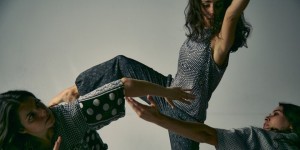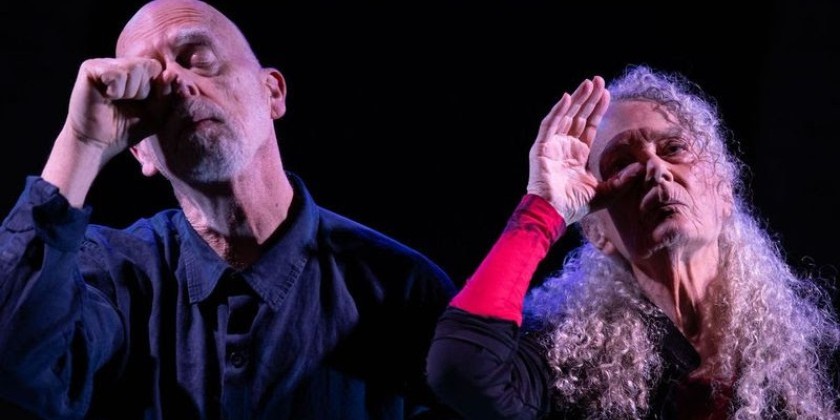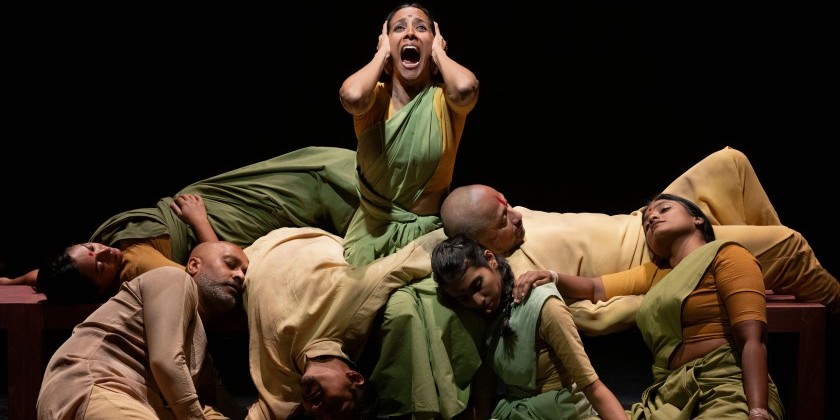IMPRESSIONS: Barkin/Selissen Project's "Accidental Suite" at Arts on Site

October 9, 2021
Performers: Kyla Barkin, Michael Bishop, Lindsay Harwell, Fumihiro Kikuchi, Siobhan Murray, Madison Pineda, Aaron Selissen, Amanda Sommers, Rachel Yoo
Original score by Zac Selissen // Lighting Design: Stephen Petrilli
Films
-
Body Cells — Director: Juano Castillo / Choreographer: Kyla Barkin / Music: Kevin Keller
-
Dancers: Lindsey Harwell, Kristi Ann Schopfer *Seven Armed Mind / Director: Aaron Sellisen / Choreographer: Kyla Barkin / Music: Zac Sellisen Dancer: Kyla Barkin
-
Accidental Suite — Directed, Danced, and Choreographed by Kyla Barkin and Aaron Selissen / Music: Zac Sellisen
-
The Sun Never Came Out Today… And Other Melancholy Statements — Directed by Kyla Barkin and Aaron Selissen / Cinematography: Juano Castillo / Choreography: Kyla Barkin / Music: Zac Selissen / Dancers: Kyla Barkin, Lindsay Harwell, Kristi Ann Schopfer, Aaron Selissen
-
Slice of Rain — Director: Aaron Selissen / Choreographer: Kyla Barkin / Dancers: Marie Douesnard Stevens, Kendra Isobel Samson, Kristi Ann Schopfer

We live in deeply alienating times marked by political upheaval, divisive media, acrimonious interactions, and a global pandemic that continues to isolate us. Barkin/Selissen Project’s Accidental Suite responds to this friction by tapping into the most essential of human needs: connection. Originally conceived as one of five short dance films presented online during their Title’s Project, a 2019 initiative that allowed audiences to select a film to be expanded for a live performance, Accidental Suite explores ideas of relationship, isolation, memory and community. Audiences are offered a taste of these themes while viewing the films, played consecutively, before the live presentation.
While presenting film alongside a live performance can be powerful, experiencing several short movies back-to-back feels rushed. I wanted more time to digest the imagery and detail of every piece and found myself feeling anxious as each film began.

Standing out for its clear ties to the evening’s theme of connectivity, Body Cells, choreographed by Kyla Barkin and directed by Juano Castillo, reminds us that our need for alliance is made all the more acute when confronted with its absence. Dancers Lindsey Harwell and Kristi Ann Schopfer search for lasting physical contact but can’t maintain their relationship. With reverence they rest against each other, elbow to chest, hand to face. Close, but not quite touching, Harwell gently cradles the air around Schopfer’s body as she moves. As Harwell seeks out Schopfer again and again, she vanishes, ghost-like. His body fills the empty space she leaves behind. By the end of the film, Schopfer is gone, and Harwell is left only with her photograph, his one tangible memory.
Seven Armed Mind, choreographed by Barkin with direction by Aaron Selissen, explores themes of isolation and longing. Barkin sculpts the air, her spine as adept as fingers probing the clay-like darkness surrounding her. Sinuous and insectile, she traverses loneliness, shifting from small, abbreviated movements to more expansive impulses. Filmed in a very dark space with minimal side lighting, Barkin’s solitude and fruitless search for companionship are prominent.

Accidental Suite, the film ultimately chosen by audiences to be transformed into a live performance, offers a light, joyful look at the concept of connection. Barkin and Selissen approach each other with curiosity, shaping the space around them as they explore and gradually build a partnership. At times Selissen’s head descends through Barkin’s arms or paints the air above her outstretched hands. With growing trust, their bodies expand and contract in harmony.
The live version of the duet film, with a cast of nine, furthers the idea of relationship building and amplifying opportunities for trust and harmony. Fumihiro Kikuchi moves onto the stage as if in meditation, inquisitive and solemn. As more people join him, a mood of sensuality arises. Hands fondle the air, focusing our attention on the space around them, giving weight to the weightless. Swirling around each other as if underwater, the dancer’s movements are easy, yet sculptural and precise, individual, yet part of an intricately connected system. One dancer contracts his back as another drops her arms. The cause-and-effect quality mesmerizes. In duets, the dancers somehow give the illusion of more than two bodies on stage.

Couples meet, dance, then melt away from each other. Performers make contact and surrender into seamlessly supported lifts. Kaleidoscopic images emerge. We think of molecules finding each other and creating new bonds. The group is an organism greater than the sum of its parts, one that can be deeply connected even without touching.
Suddenly Barkin appears out of nowhere. Firmly rooted among the throng of moving bodies she seems to be recalling something or someone. The dancers clump around her, then fall, one-by-one, like dominoes, her memories fading away. Barkin is left standing in the present, alone, yet stronger for the connections of her past.















